
Is seismic intensity really different than an earthquake's magnitude? Find out here!
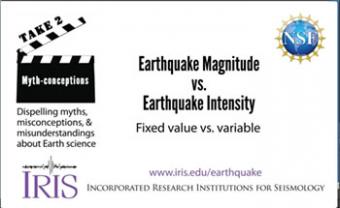
Magnitude and intensity are both related to the size of an earthquake, but they each measure different aspects. One is measured using seismometers; the others is felt. Let's use a lightbulb as an analogy.
Go to Resource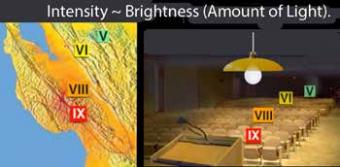
Magnitude and intensity are different, yet related concepts. The size of an earthquake, or magnitude, is a single value, while seismic intensity, a measure of the strength of shaking at a specific location, varies depending on location. Three learning options of different lengths (5, 15, and 45+ minutes) provide hands-on activities to understand an earthquake’s magnitude and intensity with a lightbulb analogy and compare factors that affect intensity.
Go to ResourceThe magnitude of an earthquake is a measure of its size. The Richter (or local) magnitude depends on the amplitude of the seismic waves. The moment magnitude depends on the physical parameters of an earthquake. Let's find out more!

Magnitude (M) describes the size of an earthquake. The energy released in an earthquake relates to the difference in magnitude. Each step in magnitude represents a 32 times increase in the amount of energy released.
Breaking spaghetti illustrates this concept. If a Pasta Quake M5 earthquake is one spaghetti noodle, 32 noodles is a M6 earthquake! And 1024 noodles is a M7 earthquake - try to break that with your hands!
Go to Resource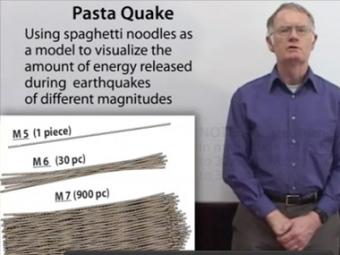
Understanding the magnitude change, thus the relative energy released from say, magnitude 7 to magnitude 8 can be challenging. Dr. Robert Butler (Univ. of Portland) uses spaghetti to illustrate the concept by breaking pasta to show how each step up in magnitude represents a huge jump in the size of the pasta bundles. Each step in magnitude is represented by 32 times more spaghetti noodles.
Go to Resource

Why do seismologists change the magnitude of an earthquake? Obtaining an accurate preliminary magnitude can be difficult due not only to the complex processes that occur deep within the Earth, but because there are over a dozen techniques of for calculating the magnitude of an earthquake.
Go to Resource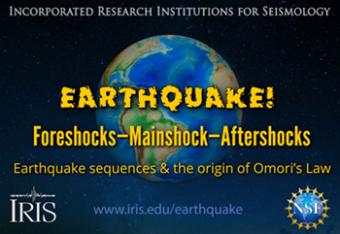
There is often confusion surrounding the terminology of earthquakes. Large earthquakes are usually followed by hundreds and even thousands of smaller earthquakes, called aftershocks.
Go to Resource
The "moment magnitude" scale has replaced the Richter scale for large earthquakes. Scientists have developed far-more sensitive seismometers that, with faster computers, have enabled them to record & interpret a broader spectrum of seismic signals than was possible in the 1930's, when the Richter magnitude was developed. Find out what scientists learn from seismograms.
Go to ResourceThe shaking you feel during an earthquake depends on four geologic factors. You may also feel different shaking depending on the building you are in.
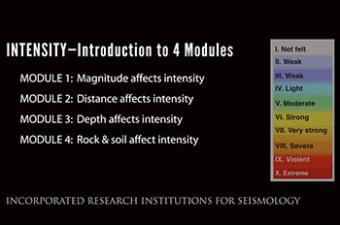
Seismic intensity is the shaking you experience during an earthquake. An earthquake's magnitude is a measure of the energy released and is the same for all locations. Unlike magnitude, the intensity of shaking you feel depends on your location.
Go to Resource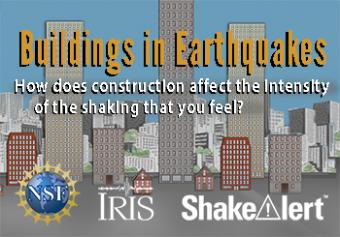
In earthquake-prone regions, buildings can be designed resist being deformed, The way the building is constructed and your position in the building can have an impact on the shaking you feel. Learn more about construction as well as mitigation practices.
Go to Resource
The rolling motion of a seismic wave may move at the same frequency of a building. The structure will then sway back and forth during the seismic vibration. A building's architectural design, height (how many stories), and construction materials affect resonance, or the seismic oscillation. Buildings engineered with earthquake shaking in mind will withstand resonance and serious damage.
Go to Resource